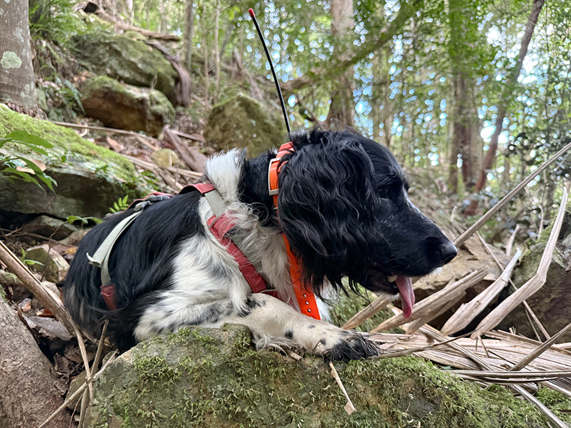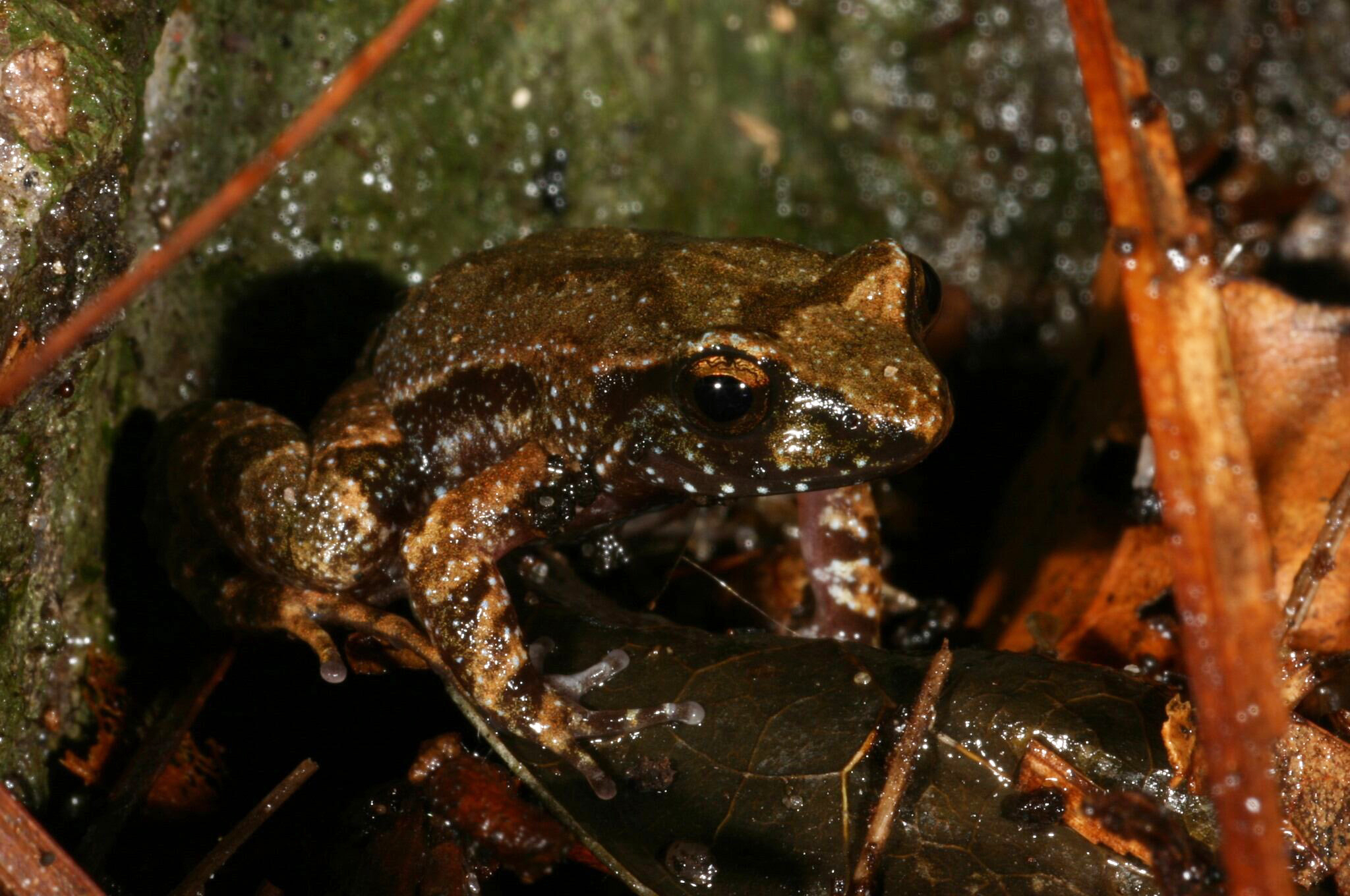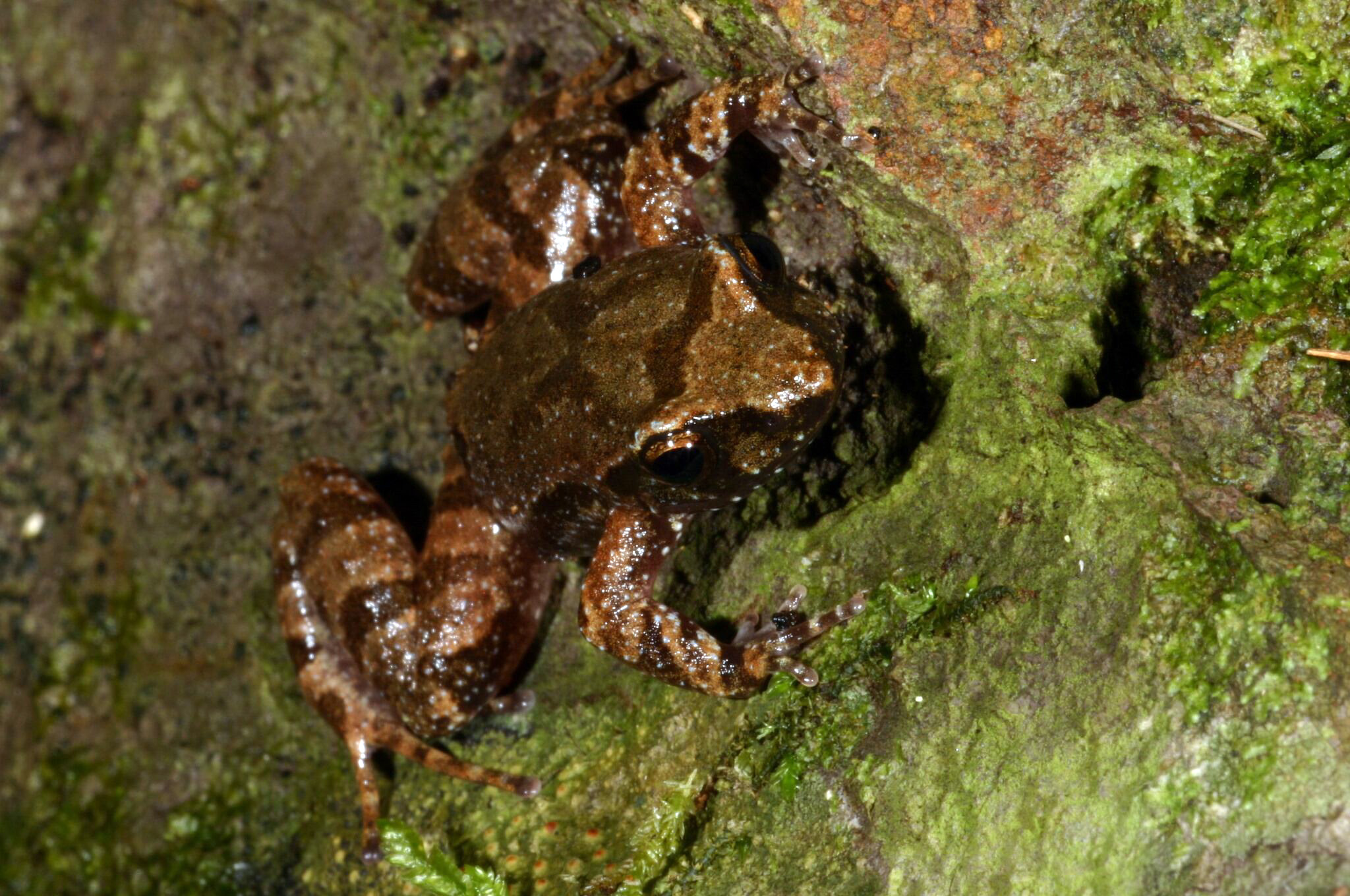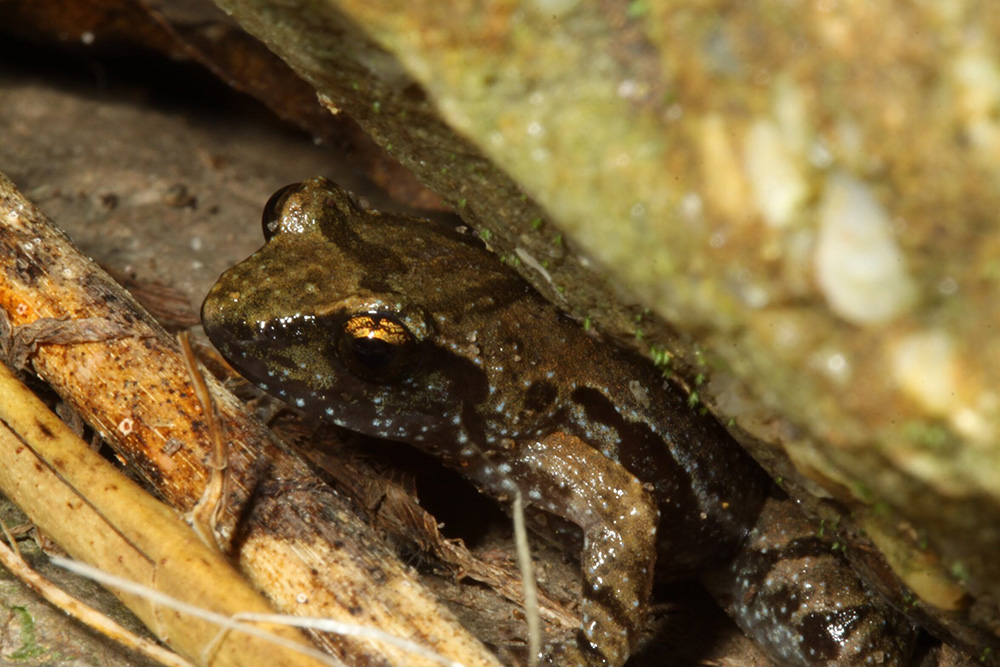Kroombit tinker frog
Expanding the Kroombit tinker frog population in Queensland
This highly elusive small frog has been evolving in isolation in Queensland, but the Kroombit tinker frog needs our help to continue thriving in the wild.

Species overview
The only place in the world where you’ll find the small, highly cryptic Kroombit tinker frog is in the Kroombit Tops National Park, south-west of Gladstone, Queensland.
First Nations peoples have maintained a strong and continuing association with Kroombit Tops for thousands of years.
About 800m above the surrounding areas to the east, the national park experiences much cooler and wetter weather, creating a ‘temperate island’ in the subtropics. Kroombit tinker frogs live under rocks and in leaf litter in small areas of gully rainforests along the park’s eastern escarpment.
The Kroombit tinker frog belongs to the Taudactylus group of frogs, which diverged from all other amphibians about 45 million years ago.
Unfortunately, due to habitat degradation and disease, the tinker frog is facing extinction, with less than 150 estimated in the wild.
Ecology and behaviour
Frogs play a role in the ecosystem as a food source. By eating invertebrates, tinker frogs also help to keep insect populations in balance. They are considered bioindicators and highly sensitive to environmental changes. They have absorbent (permeable) skin through which they transfer moisture, oxygen and minerals.
Tinker frogs are hard to find as they have markings and colouration that provide excellent camouflage in the wild. We only know this highly cryptic species is present when we hear its distinctive calling.
The frog gets its name from its ‘tink, tink, tink’ call—a series of sharp, metallic ‘tinks’.
They can call (and presumably breed) any time of year. Their calls have been observed when the area is moist. However, very low and very high temperatures, periods of heavy rainfall, and long dry spells reduce or prevent their calls.
Unlike many other frogs, Kroombit tinker frogs don’t appear to need surface water to breed, although their eggs and tadpoles have never been found in the wild. Instead, scientists think this frog breeds in small underground pools of water, perhaps as small as half a cup. Recent successful breeding of the species in captivity at Currumbin Wildlife Sanctuary supports this theory.

Characteristics
The Kroombit tinker frog has:
- a body length less than 30mm (adult males)
- a grey, bluish grey or brown back with darker X-shaped markings and patches
- a white belly with brown specks
- a dark brown stripe from the tip of its snout to its groin
- a dark v-shaped mark between the eyes
- legs and arms with brown bars
- unwebbed fingers and toes, both with small discs.
Threats
- Disease caused by the amphibian chytrid fungus
- Habitat degradation by feral pigs, horses and domestic cattle
- Introduced pests e.g. feral pigs
- Bushfires.
What’s being done?
- In 2017, we launched a captive breeding program with Currumbin Wildlife Sanctuary to reintroduce genetically diverse frogs. The captive-bred frogs supplement existing populations and repopulate sites where frogs have gone locally extinct.
- In 2023, we released the first captive-born frogs into the wild. In 2024, we recorded the released frogs at the reintroduction site. We will measure the longer-term success of the project by monitoring calling activity.
- Monitoring includes regular surveys and deployments of many bio-acoustic recorders through most of its range.
- We use automated call-recognition software to analyse recordings and have over 2 million acoustic recordings.
- We also regularly assess pest species and their impacts on the frog’s habitat. Our pest control measures focus on reducing pest animals in the national park and fencing off critical Kroombit tinker frog sites to prevent feral pigs from degrading the habitat.
Who is helping?
- Currumbin Wildlife Sanctuary (CWS)
The sanctuary has a crucial role in tinker frog conservation, managing a successful captive breeding program and ongoing monitoring through the Kroombit Tinker frog Recovery Program. - Queensland Frog Society (QFS)
In 2019, this society received Queensland Government funding for a three-year monitoring project for the species in the Kroombit Tops National Park. In 2023, QFS assisted in releasing captive-bred frogs from the CWS. - External experts
Experts have expanded tinker frog knowledge, including Edward Pedersen (call recognition), Dr Edward Meyer (frog ecologist and captive breeding advisor) and John Clarke (tinker frog frog ecologist and climate change modelling) from the CSIRO.

- Commonwealth Department of Climate Change, Energy, the Environment and Water
Through the Saving Native Species (Priority Species) Program, the Federal Government has provided funding for Kroombit tinker frog conservation actions, including the expansion of the captive breeding program and trialling innovative measures, such as the use of detection dogs to locate the tinker frog. - Fitzroy Basin Association (FBA)
Over many years, FBA has coordinated tinker frog conservation activities, such as surveys and feral animal control. - First Nations communities
First Nations are participating in the recovery of the Kroombit tinker frog by assisting with monitoring and weed control.

How you can help
- Please be frog friendly. If you are visiting national parks or adjacent areas, please remember to:
- Clean your camping gear and walking boots, minimising the risk of spreading diseases, pathogens and weeds.
- Do not disturb, handle or remove frogs, their eggs or tadpoles.
- Do not use or discard soap, detergent, shampoo, sunscreen, insect repellent or any other potential pollutant in creeks or along the banks.
- Keep to walking tracks and cross directly where the track crosses the creek.
- Do not disturb or remove rocks or trample vegetation in or around creeks.
- Join the Australian Museum’s Frog ID citizen science project and record frog calls with your smartphone.
- Make a donation to support Queensland threatened species protection and science and research-based initiatives.
- Find out more about how you can help support threatened species efforts.


